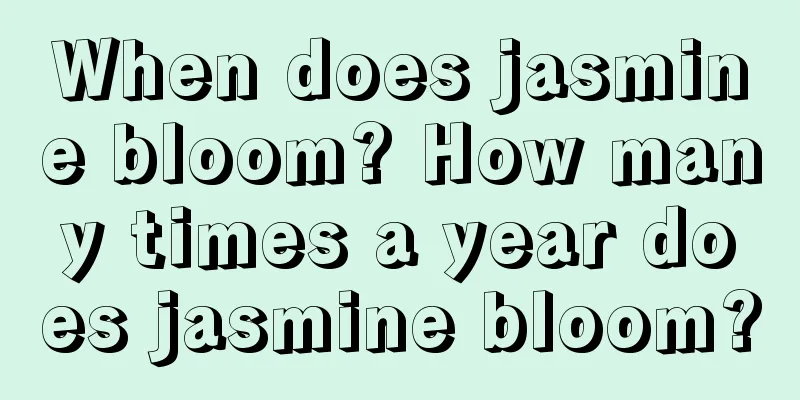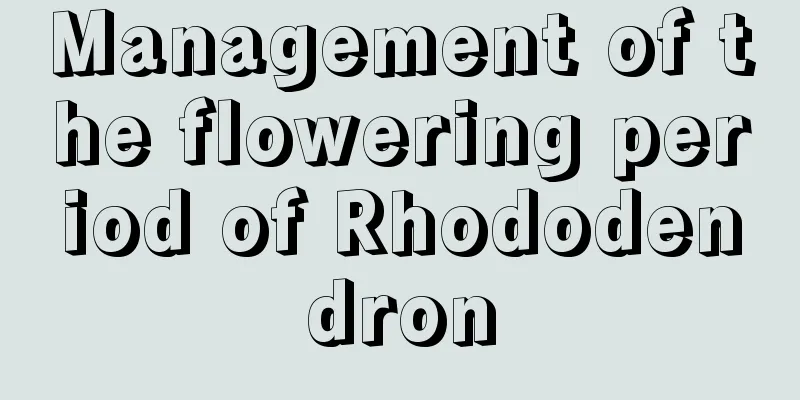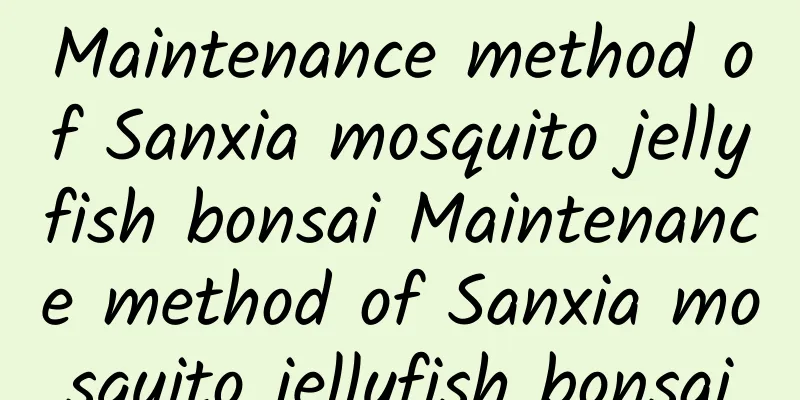When does jasmine bloom? How many times a year does jasmine bloom?

1. When does jasmine bloom?Jasmine usually blooms from May to August every year. If properly cared for, the flowering period can be extended to October or November. The flowers are borne in terminal cymes, with three flowers on a single inflorescence, but sometimes they are single and sometimes there are up to five flowers. The flowers are pure white and elegant, with a strong fragrance. 2. How many times does jasmine bloom in a year?If grown properly, it can bloom three times a year. The first flowering is from May to August, the second flowering is from August to September, and the third flowering is from September to early October, and the number is less than before. First flowering: It blooms in early June and is commonly known as "moldy flower". In early June, jasmine will begin to bloom early. At this time, the flowers will be smaller and fewer, and need to be picked in time, otherwise they will consume nutrients for the winter and affect the quality and quantity of subsequent flowering. Second flowering: It blooms in late August, commonly known as "Fuhua". At this time, it is necessary to increase the frequency and amount of fertilization for the plants in time. In order to make it bloom better, you can spray calcium phosphate solution on the leaves. The third flowering period: It blooms from early September to mid-October, commonly known as "autumn flowers". At this time, the weather turns cooler, so stop fertilizing and reduce watering, otherwise it will affect the number of flower buds. After the flowering is over, keep the soil in the pot moist so that the plant can survive the winter smoothly. 3. Jasmine maintenance method1. Potting soil: It is best to choose soil rich in organic matter, with good water retention, air permeability and permeability for growing jasmine. For example, you can use a mixture of 5 parts leaf mold, 4 parts sandy loam, and 1 part cake fertilizer as the culture soil. 2. Fertilization: During the growing period, you can apply more organic fertilizers and phosphorus and potassium fertilizers once a month. During the bud formation and flowering period, apply thin fertilizer once every 7 days. Stop fertilizing after late autumn. 3. Watering: Water in appropriate amounts. Follow the principle of not watering unless the soil is dry, and watering thoroughly when you do. 4. Temperature: Jasmine is afraid of cold, so it is best kept in a sunny place indoors. The indoor temperature should not be lower than 8 degrees. When the temperature is too low, you can cover it with plastic bags to prevent wind and frost. |
<<: Watermelon planting technology, when to plant watermelon
>>: What are the characteristics of creeper? Complete picture of creeper
Recommend
Planting methods and techniques of fortune tree
The money tree is a perennial evergreen small tre...
When do poinsettias bloom?
Poinsettia flowering period: October to April of ...
Can morning glory be hydroponically cultivated? Water cultivation methods and precautions
Can morning glory be grown hydroponically? Mornin...
How to prune the rich coconut palm
When to prune the rich coconut palm It is general...
How to grow Ganoderma
1. Prepare the substrate The culture matrix can b...
Introduction to the production method and steps of persimmon tree bonsai
1. Choose the right potting soil The flowerpot ca...
How to raise bear paw in summer
1. Proper water control Bear's Paw will stop ...
Cultivation methods and precautions of duckweed
Soil selection for Nuphar The pH requirement of t...
How many kilograms of corn can be produced per mu in Xinjiang?
Corn yield per mu in Xinjiang The corn yield in X...
What to do if gardenia wilts
Reasons why gardenias wilt The reason why gardeni...
How to breed Sakura crystal and what to pay attention to
How to reproduce Sakura crystal The propagation m...
The meaning of lucky bamboo
1. Meaning The meaning of lucky bamboo is self-ev...
Is it good to water flowers with cooking oil? How to water flowers with cooking oil
Cooking oil can actually be used to water flowers...
The growing environment and local conditions of Schisandra chinensis
Schisandra chinensis growth environment and condi...
What is the best way to grow pennywort?
The pennywort is a very popular plant. It can be ...









